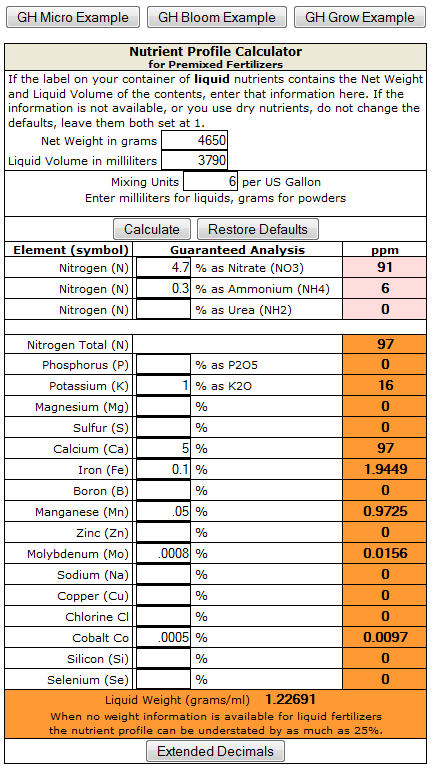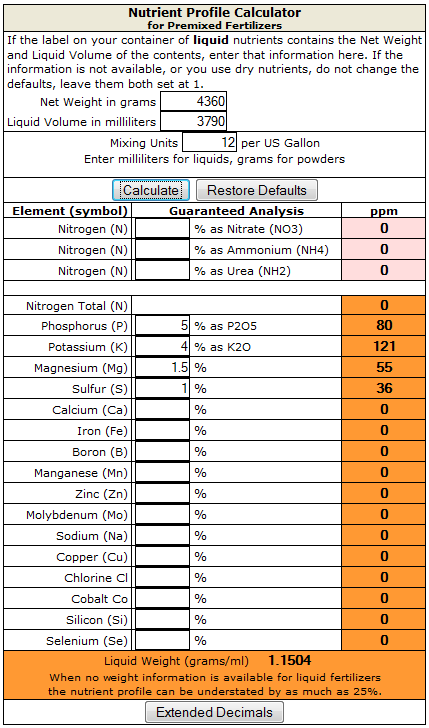Don't really know. It will take some testing to really find this out. I may be getting some meters to take objective measurements of different light sources. I know I want to see the raw data and I figure many others do as well.
Plans are to get ...
LUX meter
Quantum PAR meter
Digital Infrared Thermometer
UVB meter
I will need at least a LUX meter to give you a rough comparison. HIDs seem to always list their brightness on lumens instead of LUX.
Lux is just a measurement of lumens... Over the area that it hits, instead of the gross amount coming from the source. Better in a way because you don't have to sit there with a calculator and use the inverse square formula and then account for the amount (or lack of) of reflectivity of your walls and the shape/reflectiveness of your hood. Wikipedia's example is that a 1000 lumen source concentrated in one meter will illuminate that area with 1000 lux but that same source in an area of 100 meters will only illuminate it with 100 lux. Kind of simplistic as it also doesn't take reflectivity into account but it basically shows what we already know (the concept, I mean - not the actual numbers).
But as it still deals with lumen, it's still absolutely weighted towards the human eye and the wavelengths of the source that
appear to be brighter to the human eye will give a lux meter higher numbers.
By nature, LEDs are supposed to be set up with the individual wavelengths that the plant uses - many of which are given a very
small weight on the lumen scale. So using a lux meter to compare an LED that's designed for growing plants to a traditional MH or HPS - even one that has been built and/or marketed for horticultural use - is akin to comparing apples to... televisions.
IOW, if an LED light reads significantly lower on the lux scale than a HID does, not only is this not a bad thing, it's actually a GOOD thing. And it explains why a 400-watt LED might only state in the specs that it produces 16,000 (whatever) lumens, while a HPS might state 50K.
I've probably made a hash of it, lol. Not feeling very intelligent at the moment. If your lux meter can be configured to use radiant flux instead of luminous flux then you'd remove the whole "as perceived by the human eye" thing. But I don't know if they have that option.
The Quantum PAR meter will be better in showing the amount of usable light being made available to the plants.
MUCH better. I've read that it is still not perfect in that they give some weight to a couple of wavelengths that a plant might not use (or will use with low efficiency) but overall they do what their name states.
I can't use the wattage rating of the LEDs since they just do not compare evenly. Even different wattage LEDs have different efficiencies. The more watts a LED uses, the worse the efficiency. This means that a 3 watt LED is not 3 times as bright as a 1 watt LED, though it will use 3 times the electricity.
And 600-watt HPS are more efficient than 400- and 1000-watt ones (but the 1000-watt ones have more penetration), the 42- or 68-watt (I forget) CFL is somewhat more efficient than the higher and lower wattage models, a 600-watt HPS setup produces less heat than 600-watts of CFLs (and about twice the illumination)... Also a good remote-ballast air-cooled HID produces a large chunk of the heat in the other room and much of that which is actually produced by the bulb is carried away before heating the grow room (and without forcing you to blow all that supplemental CO2 out).
I have pretty much come to the conclusion that the only true way to compare different lights is to turn them on, grow and harvest a crop, and then figure out the time it took, the electricity used - and I mean the total amount for the entire garden, not just the light(s) - and weigh both against the yield.
And I don't think there's a formula for that, lol, because all gardens are not exactly the same and since they are run by people instead of machines there's that pesky human factor. Even two people running the exact same strain (, clones of) with the same light/vent/cooling setup aren't likely to hit the same yield. <LAUGHING> It's not even uncommon for the same grower to have two different yields in two grows.
YOU'RE rambling?

studies show that Fluoro produces more usable light for cannabis than LED's
Huh? A general-use CFL might produce more PAR than a general-use (as in "reading-light") LED. But if you're talking about a purpose-built horticultural LED... That sounds kind of fishy.








 Paying attention is a required skill of all successful growers. Others can offer tips from their experience, but they grow in probably somewhat of a different environment to yours. Fortunately, Cannabis is adaptable so keep that sleuthing cap on!
Paying attention is a required skill of all successful growers. Others can offer tips from their experience, but they grow in probably somewhat of a different environment to yours. Fortunately, Cannabis is adaptable so keep that sleuthing cap on! 

 My friend. Words of wisdom
My friend. Words of wisdom 




 .
. but here it goes:
but here it goes: I guess if you could supplement the lighting on an outdoor grow, you could make a fairer comparison, but that would be a rare grow indeed! All I'm saying is that there is rarely one answer to a type of question unless that answer is, "It depends..."
I guess if you could supplement the lighting on an outdoor grow, you could make a fairer comparison, but that would be a rare grow indeed! All I'm saying is that there is rarely one answer to a type of question unless that answer is, "It depends..."
 (my personal favorite)
(my personal favorite)